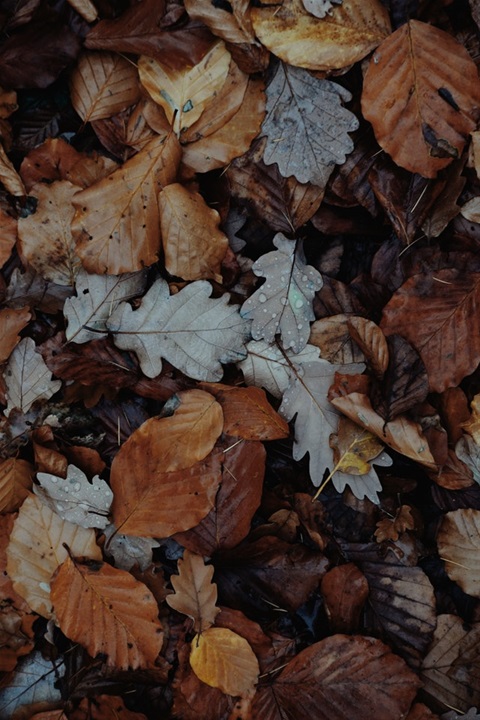Autumn Leaves
Autumn leaves provide a crop of compostable material that is available for only a short time each year. If your garden or allotment is near deciduous trees do not let this bounty go to waste. The local council may be prepared to let you harvest leaves from your local recreation ground or park. It is estimated that over 50,000 tonnes of leaves are collected from parks each year
In general, as leaves take a longer time to breakdown, in the UK, they are treated separately to make leafmould but in other countries they are recognised as an easily stored source of Browns that can be added to the compost bin.
Most autumn leaves are an excellent source of carbon but depending on species may be slower to compost than the rest of the material in the bin if using cold composting techniques so they should be added with plenty of greens. Dry autumn leaves have a C/N ratio averaging about 60, but ranging from 20-100, providing an excellent source of browns over the winter to give balance to the nitrogen rich kitchen waste that will continue to be produced throughout the winter months
Leaves should be shredded, if possible, either using a shredder, or by mowing on the lawn, and mixed well when added to the compost bin otherwise they may matt and form a barrier to the circulation of air within the bin. If using a New Zealand bin, they can be added as a layer of browns and mixed as part of the normal aeration by turning.
Making Leafmould
Leaves have traditionally been contained in a wire netting cage or wooden compost bin when making leafmould. As with composting larger bins work best so try to make the container at least a metre square. Simply fix the chicken wire to four posts with galvanised fencing staples. If there is a good supply of leaves opt for a three-bin system so that the leaves from different years and stages of decomposition can be kept apart. The bottom of the bin can be lined with weed suppressant or cardboard.
Second-hand builders' bulk bags can also be used to make leafmould, they are permeable allowing excess moisture to drain away. Some people support the corners of the bag with stakes. The bag will be very heavy when filled so the bottom can be cut out so that it can be lifted off the leafmould when it is ready others regard the bag as disposable and cut the front open to harvest the leafmould. The lids will help retain moisture in dry weather and prevent the contents becoming waterlogged during wet periods.
For best results the pile should be checked during hot or dry periods and watered if necessary, to keep leaves damp.
Perhaps the most used method is to fill a large plastic bag with wet leaves, stab it with a garden fork and leave for two years. Grass and urine can be used to speed the process. There are more details at http://www.carryoncomposting.com/142941489
Good leafmould has an earthy, dark brown texture and the smell will remind you of a woodland floor in spring or early summer.
Leafmould can be used as :
- A mulch, it is very effective at retaining moisture being able to hold up to 500 times its own weight, increased their water-holding capacity of the soil by almost 50 percent.
- A soil conditioner, reducing the soil density and making easier for roots to penetrate the and absorb nutrients,
- A potting mix or seed compost and as
- A renewable peat substitute
It can be used after a year, when the leaves are beginning to break down and the material is easily crumbled, as a soil improver or mulch around shrubs, in the flower or vegetable garden. It can also be used as a lawn top dressing in the Autumn.
However, it is best kept for two years or more until it is dark brown in colour, crumbly with no real trace of original leaves visible.

Latest comments
Do you have any data on ' application ' of Aerated Vermi Compost Tea to Mangoes and benneficial outcomes .
Very informative site. Having been away for 5 weeks and returning to evidence of rats under and around the compost bin, I can testify to lack of human activity allowing the rats to get comfortable.
can i use dog manure in compost and mulching leaves?
What is the C and N ratio for coffee chaff?